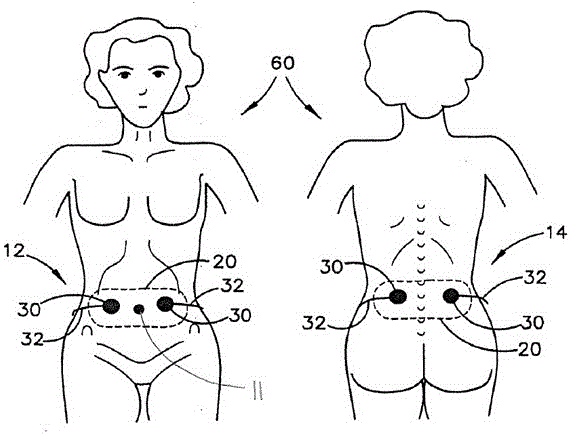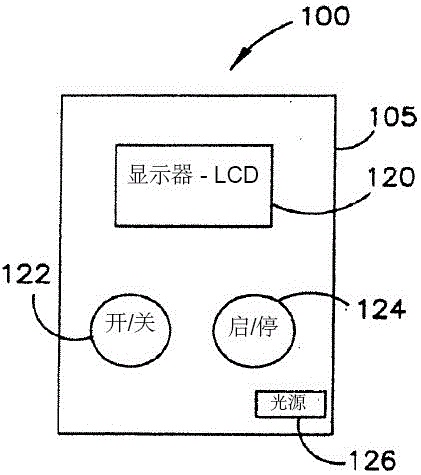Transdermal stimulation methods and systems
A technology of electrical stimulation and stimulation devices, which is applied in the field of percutaneous stimulation and systems, and can solve problems such as ineffectiveness
- Summary
- Abstract
- Description
- Claims
- Application Information
AI Technical Summary
Problems solved by technology
Method used
Image
Examples
Embodiment 1
[0112] Daily transcutaneous electrical stimulation increases bowel movements in children with slow transit constipation.
[0113] Patient Population: Randomized Controlled Trials Testing Transcutaneous Electrical Stimulation (TES) (Clark etal ,2009 supra ) (RCT) halfway through, battery-operated machines became available, thus allowing parents to perform stimulation at home. Eleven children with slow transit constipation (6 males / 5 females, mean 14 years, age range 12-18 years) completed the RCT study with no recurrence or increase in bowel movements, which provided an opportunity for pediatric specialists to try the machine ( 11 ± 5 months after TES experiment). All of these children had chronic constipation and soiled stools for at least 2 years prior to the RCT, but were unresponsive to TES in the experiment, and medical treatment (such as dietary modification, oral or rectal laxatives) was ineffective for them.
[0114] All 11 children underwent a radio-nuclear transit...
Embodiment 2
[0132] Example 2: Long-term benefits of TES treatment.
[0133] In a follow-up study of patients who had previously been enrolled in the TES trial, mixed sustained improvement was noted after the duration of TES use.
[0134]A total of 105 patients were included in the transcutaneous electrical stimulation (interference) treatment (Table 2). They included 66 male patients and 39 female patients. The patients ranged in age from 6 to 18 years, with a mean age of 11.5 years. All of these patients were selected for treatment after being diagnosed with slow transit constipation using nuclear transport studies. Transcutaneous electrical stimulation has different stages of development, from TICTOC to TENS experiments and home stimulation therapy. All patients were required to fill out an age-appropriate continence diary (continencediary) and PedsQL questionnaire after being recruited into the trial, rather as a follow-up protocol during and after treatment.
[0135] In the TICTOC...
Embodiment 3
[0139] Results of 4 children currently using an anorectal retention (AR) regimen for their chronic constipation are shown in Table 3. The position of the motor 30 is shown in Figures 8A to 8C and explained. The prescribed TES treatment regimen is the same as in the other examples, including treatment of about 60 minutes per day for a period of several weeks or months.
[0140] Table 3: Children with Chronic Constipation Treated with AR Regimen
[0141]
[0142] As indicated by these preliminary data in Table 3, TES therapy using an interfering current applied to the lower pelvic and sacral region was effective for treating emptying dysfunction in the recto-sigmoid colon. Such a procedure after treating STC at a higher electrode position has also been shown to be effective. This suggests that this lower electrode positioning could be a complementary or independent procedure to higher electrode positioning. If the treatment procedure at the lower electrodes is complement...
PUM
 Login to View More
Login to View More Abstract
Description
Claims
Application Information
 Login to View More
Login to View More - R&D
- Intellectual Property
- Life Sciences
- Materials
- Tech Scout
- Unparalleled Data Quality
- Higher Quality Content
- 60% Fewer Hallucinations
Browse by: Latest US Patents, China's latest patents, Technical Efficacy Thesaurus, Application Domain, Technology Topic, Popular Technical Reports.
© 2025 PatSnap. All rights reserved.Legal|Privacy policy|Modern Slavery Act Transparency Statement|Sitemap|About US| Contact US: help@patsnap.com



